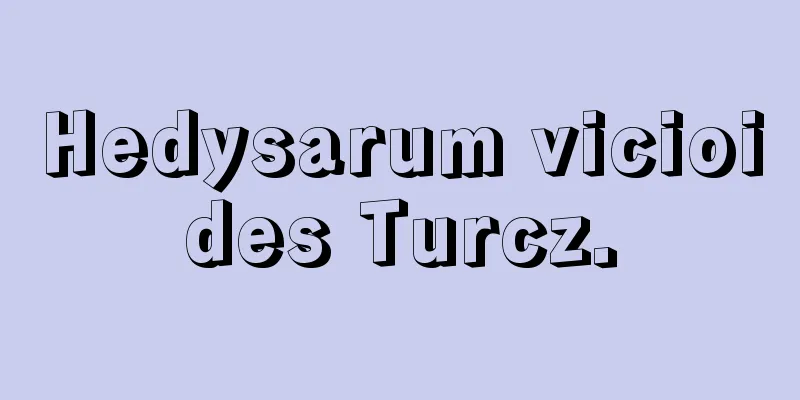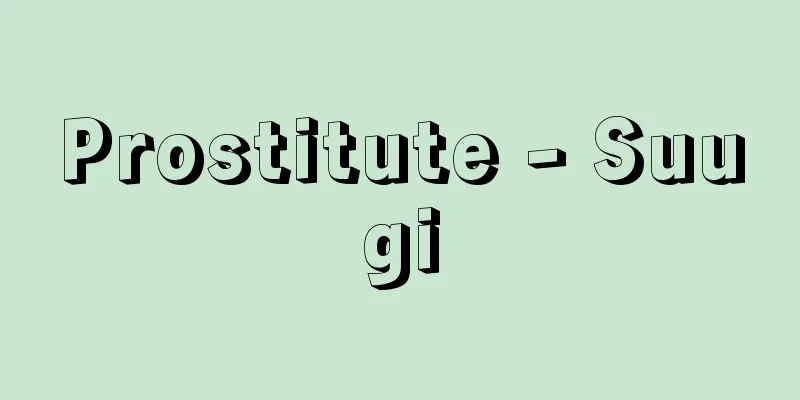Kitagawa Utamaro

|
A late Edo period ukiyo-e artist. Kitagawa. Commonly known as Yusuke or Ichitaro, his artistic name was originally Kitagawa Toyoaki, but during the Tenmei period (1781-1789) he changed his name to Utamaro (Komaro, Utamaro), and his artistic surname also began to be written as Kitagawa. At the time, Utamaro was read as "Utamaru." He enjoyed kyoka poetry, and his kyoka name was Fude no Ayamaru. He learned painting from Toriyama Sekien from an early age, and his debut work as an ukiyo-e artist was the cover art for "Shijuuhattekoi no Showake," published in 1775 (An'ei 4) in the Tomimoto Joruri Shohon series. His first Nishikie print was "Yoshizawa Iroha's Sushi Shop Girl Osato," a picture of actors on stage at a Nakamuraza theater in August 1777. These early works from his Toyoaki period show a strong influence from Katsukawa Shunsho. After he changed his name to Utamaro in the Tenmei era, he admired the style of Torii Kiyonaga and developed into a painter of beautiful women. His talent was recognized by the up-and-coming publisher Tsutaya Juzaburo (Tsutajyu), and he not only produced nishiki-e prints, but also published a series of gorgeous multi-colored kyoka picture books through Tsutaya, honing his realistic style. His trilogy of "Ehon Mushi Erami" (Picture Book of Insects) (published in 1788), "Shiohi no Tsuto" (Low Tide) and "Momochidori" (One Hundred Thousand Birds) (both published in 1789 and 1790) are known as Utamaro's masterpieces of kyoka picture books, featuring lifelike colored illustrations of insects, shells and birds. Nishikie painting of beautiful women began with imitating Kiyonaga's group portraits, but he soon came up with the idea of a "large neck painting" style in which he would get up close and capture the subtle changes in the woman's facial expression, and by the beginning of the Kansei era (1789-1801) he had established his own unique style. In order to beautifully highlight the soft skin of women on a "kirazuri" or "yellow tumbler" background, he experimented with a variety of original techniques, such as using vermilion lines or omitting outlines. In the midst of the Kansei Reforms, restrictions were placed on the precision of carving and the number of colors that could be used, but he took advantage of this and achieved the clear and straightforward aesthetic effects that only prints could provide, using only a few colors and limited line drawings. In his series of large-headed portraits of beautiful women produced around 1792 and 1793 (Kansei 4 and 5), such as "Kasen Koi no Bu" (A Selection of Love Poets' Works) and "Fujinsogaku Jittai" (The Ten Bodies of Women's Physiognomy), he is able to fully express the facial expressions of women across all social classes, and in his subsequent works, produced in 1794 and 1795, such as "A Selection of Six Famous Beauties" and "A Collection of Beauties from the Golden Age of the Time," he used real-life beauties such as courtesans and teahouse girls of the golden age as models, and subtly depicted the unique looks of each woman within a stereotypical depiction, demonstrating his excellent qualities as a portrait painter rather than merely a painter of beauties. Furthermore, in her series of full-body portraits produced around the same time, "Twelve Hours in the Blue Brothel," she vividly depicts a day in the life of a prostitute in the Shin Yoshiwara pleasure district, demonstrating the true value of the artist that the French writer Edmond Goncourt dubbed "blue brothel painter" (Le peintre des maisons vertes). Utamaro's mica-printed large-head paintings were probably initially planned and published under the advice and support of the publisher Tsutaya Juzaburo, and many of his masterpieces were published by Tsutaya. Tsutaya's contributions to the blossoming of Utamaro's art are enormous, but after Tsutaya's death in 1797, the quality of Utamaro's work began to change. With an increase in requests from other publishers, the prolific and promiscuous nature of his work may have led to a decline in the quality of his work, but it may also be the result of him losing the classical style that his mentor Tsutaya preferred. His later years were typical of Utamaro, who prided himself on being the foremost painter of beauties in the ukiyo-e world, as his works increasingly depicted sensual scenes and expressed decadent beauty, certainly predicting the trends in beauties paintings that came later in the late Edo period. In 1804 (Bunka 1), his nishiki-e (colored woodblock prints) related to "Taikoki" were criticized by the shogunate, and he was imprisoned and handcuffed, dying in despair on September 20th, Bunka 3. His posthumous name was Shaku Enryo Kyoshinshi, and he was buried at Senkoji Temple in Asakusa (now relocated to Setagaya Ward). In addition to those mentioned above, his representative works include the nishiki-e sets "Daughter's Sundial," "Northern Country Five-Colored Ink," and "Parent's Guide to Teaching," the erotic book "Utamakura" (published in 1788), and his hand-painted painting "Beautiful Woman in Dress" (Idemitsu Museum of Art, Tokyo). His students included the second Utamaro, Tsukimaro (Kikumaro), and Fujimaro, but all of them ended up as imitation painters. [Tadashi Kobayashi] "Japanese Art 23: Utamaro" by Yoshida Eiji (1972, Shogakukan)" ▽ "Overseas Hidden Treasures: Kitagawa Utamaro" by Narazaki Muneshige and others (1973, Gakken)" ▽ "Ukiyo-e Encyclopedia 5: Utamaro" by Kikuchi Sadao (1975, Shueisha)" ▽ "Hand-painted Ukiyo-e 6: Utamaro, supervised by Narazaki Muneshige (1981, Shueisha)" ▽ "Treasures of Japanese Art 22: Utamaro" by Kano Hiroyuki (1981, Shogakukan)" [References] | |Around the Kansei era (1789-1801) Owned by the National Diet Library Kitagawa Utamaro's "Matsubaya Indoor Makeup" National Diet Library Kitagawa Utamaro's "Osome Hisamatsu: Wet Bird Umbrella" National Diet Library Kitagawa Utamaro "Two Beauties of Iris" A colored picture book of kyoka poetry. Written by Ishikawa Masanobu and illustrated by Kitagawa Utamaro. Published in 1788 (Tenmei 8) . Owned by the National Diet Library . "Gahon Mushi Sen" A colored illustrated book of kyoka poetry. Compiled by Shura Sugae and illustrated by Kitagawa Utamaro. Published around the beginning of the Kansei period . Owned by the National Diet Library . "Low Tide" A colored illustrated book of kyoka poetry. Written by Akamatsu Kinkei, illustrated by Kitagawa Utamaro . Owned by the National Diet Library . "One Hundred Thousand Birds" Volume 2 "Kotatsu in the Snow" by Kitagawa Utamaro, 1801 (Kansei 13), owned by the National Diet Library "Picture Book: Flowers of the Four Seasons" Source: Shogakukan Encyclopedia Nipponica About Encyclopedia Nipponica Information | Legend |
|
江戸後期の浮世絵師。北川氏。通称勇助あるいは市太郎、画名は初め北川豊章(とよあき)、天明(てんめい)年間(1781~1789)初め歌麿(哥麿、歌麻呂)と改め、画姓も喜多川と表記するようになる。歌麿は当時「うたまる」と読まれた。狂歌をたしなみ、狂歌名を筆綾丸(ふでのあやまる)といった。幼少のときから絵を鳥山石燕(せきえん)に学び、1775年(安永4)刊の富本浄瑠璃正本(とみもとじょうるりしょうほん)『四十八手恋所訳(しじゅうはってこいのしょわけ)』の表紙絵が、浮世絵師としての処女作となる。錦絵(にしきえ)の初作は『芳沢(よしざわ)いろはのすしや娘おさと』で、1777年8月中村座上演の舞台に取材する役者絵であった。これら豊章時代の初期作には勝川春章(しゅんしょう)からの影響が濃厚に表れている。 天明(てんめい)年間に入って歌麿と改名して以後は、鳥居清長の画風を慕い、美人画家として成長していく。また、新興の版元蔦屋重三郎(つたやじゅうざぶろう)(蔦重)に才能を認められ、錦絵ばかりでなく、豪華な多色摺(ず)りの狂歌絵本を次々と蔦屋から発表、写実的な作風に磨きをかけた。『画本虫撰(えほんむしえらみ)』(1788刊)、『潮干(しおひ)のつと』『百千鳥(ももちどり)』(以上1789、1790刊)の三部作は、虫、貝、鳥を写生風に描いた色摺りの挿絵をもつ歌麿狂歌絵本の代表作として知られる。 錦絵における美人画の作画は、清長の群像表現を模倣することから始まるが、やがて対象に近接して、女性の表情の微細な変化を写し留める「大首絵」という形式を創案、寛政(かんせい)年間(1789~1801)初めには独自な作風を確立させた。「雲母摺(きらずり)」や「黄つぶし」の地に女性の柔肌(やわはだ)を美しく浮かび出させるために、ときには朱線を用い、あるいは輪郭線を省略するなど、独創的な表現法をさまざまにくふうした。また、寛政の改革のさなかにあって、彫りの精緻(せいち)や色摺りの度数が制限されたのをかえって逆用し、わずかな色数と限られた線描によって、版画ならではの明快率直な美的効果を実現したものであった。1792、1793年(寛政4、5)ごろの美人大首絵の連作『歌撰恋之部(かせんこいのぶ)』『婦人相学十躰(ふじんそうがくじったい)』などには、各階層にわたる婦女の心理的な深みをも伝える顔貌(がんぼう)表現が尽くされており、また続く1794、1795年の『高名美人六家撰(こうめいびじんろっかせん)』『当時全盛美人揃(とうじぜんせいびじんぞろえ)』などでは、全盛の遊女や茶屋女など実在の美女をモデルに、類型的表現のなかで各人の個性的容貌を微妙に描き分けるなど、単なる美人画家にとどまらぬ肖像画家としての優れた資質をも発揮している。さらに同じころの全身像による連作『青楼十二時(せいろうじゅうにとき)』では、新吉原遊廓(ゆうかく)における遊女の1日の生活模様を活写して、フランスの作家エドモン・ゴンクールが「青楼画家」Le peintre des maisons vertesと名づけた真価を発揮している。 歌麿の雲母摺大首絵は当初、版元蔦屋重三郎の助言と後援のもとに企画・発表されたものと思われ、その秀作は多く蔦屋から版行されている。歌麿芸術の開花に尽くした蔦重の功績は甚だ大きいが、事実、1797年の蔦重の死を境として、歌麿の作品の質に変化がおこってくる。他の版元からの依頼が増して、多作・乱作が作品の質を低下させた気味もあるが、よき助言者であった蔦重好みの古典的格調を失った結果とも思われる。肉感的描写が進み、デカダンな退廃美を表して、その後の幕末美人画の傾向をすでに確かに予言しているところは、浮世絵界随一の美人画家を自負した歌麿らしい晩年であった。1804年(文化1)『太閤記(たいこうき)』関係の錦絵が幕府にとがめられ、入牢(にゅうろう)、手鎖(てぐさり)の刑を受け、文化(ぶんか)3年9月20日、失意のうちに没した。法名は釈円了教信士、浅草の専光寺(現在は世田谷区に移転)に葬られた。代表作としては前述のほかに、錦絵揃物(そろいもの)に『娘日時計』『北国五色墨(ほっこくごしきずみ)』『教訓親の目鑑(めがね)』、艶本(えんぽん)として『歌まくら』(1788刊)、肉筆画に『更衣美人』(東京・出光(いでみつ)美術館)などが知られる。 門人に、2代歌麿、月麿(菊麿)、藤麿らがいるが、いずれも亜流画家に終わっている。 [小林 忠] 『吉田暎二著『日本の美術23 歌麿』(1972・小学館)』▽『楢崎宗重他著『在外秘宝 喜多川歌麿』(1973・学習研究社)』▽『菊地貞夫著『浮世絵大系5 歌麿』(1975・集英社)』▽『楢崎宗重監修『肉筆浮世絵6 歌麿』(1981・集英社)』▽『狩野博幸著『名宝日本の美術22 歌麿』(1981・小学館)』 [参照項目] | |寛政年間(1789~1801)ごろ国立国会図書館所蔵"> 喜多川歌麿『松葉屋内粧ひ』 国立国会図書館所蔵"> 喜多川歌麿『お染久松 濡乙鳥塒傘』 国立国会図書館所蔵"> 喜多川歌麿『あやめ二美人』 彩色摺狂歌絵本。宿屋飯盛(石川雅望)撰 喜多川歌麿画 1788年(天明8)刊国立国会図書館所蔵"> 『画本虫撰』 彩色摺狂歌絵本。朱楽菅江編 喜多川歌麿画 寛政初期ごろ刊国立国会図書館所蔵"> 『潮干のつと』 彩色摺狂歌絵本。赤松金鶏撰 喜多川歌麿画国立国会図書館所蔵"> 『百千鳥』 下巻 「雪に炬燵」 喜多川歌麿画 1801年(寛政13)国立国会図書館所蔵"> 『絵本四季花』 出典 小学館 日本大百科全書(ニッポニカ)日本大百科全書(ニッポニカ)について 情報 | 凡例 |
<<: Tamiji Kitagawa - Kitagawa Tamiji
>>: Kitagawa [village] - Kitagawa
Recommend
Kinpu-ryu
...Based on this, a school of music called Kinko-...
Isoprene - Isopuren (English spelling) isoprene
Its correct name is 2-methyl-1,3-butadiene, a con...
Nikko Onarimichi - Nikko Onarimichi
In early modern times, this was the main road use...
The Thirty Tyrants
An oligarchic government was established in Athens...
Jimenez - Juan Ramón Jiménez
Spanish poet. Born in Moguer in Andalusia. At the...
Ethnic migration
When a certain ethnic group leaves its traditiona...
Carotenemia
…Yellowing of the skin and mucous membranes is co...
Bingo Province
The former name of the province that is now the e...
ICPC - ICPC
…The ICPO is an international organization for mu...
Three clothes and one bowl - San-eippatsu
〘Noun〙 Three robes and one bowl for eating. The mo...
Aiolia - Aioria
…Typhōn, the king of monsters who was struck by l...
《Company Talk》 - Kaishaben
…The Meiji government sought to gather private ca...
Amazonia
The Amazon River Basin. Bounded by the Andes Mount...
Nithart, MG (English spelling) NithartMG
…He is one of the most important German Renaissan...
Long-handed - Otenaga
...Sometimes, the role was called "Uneme, a ...









